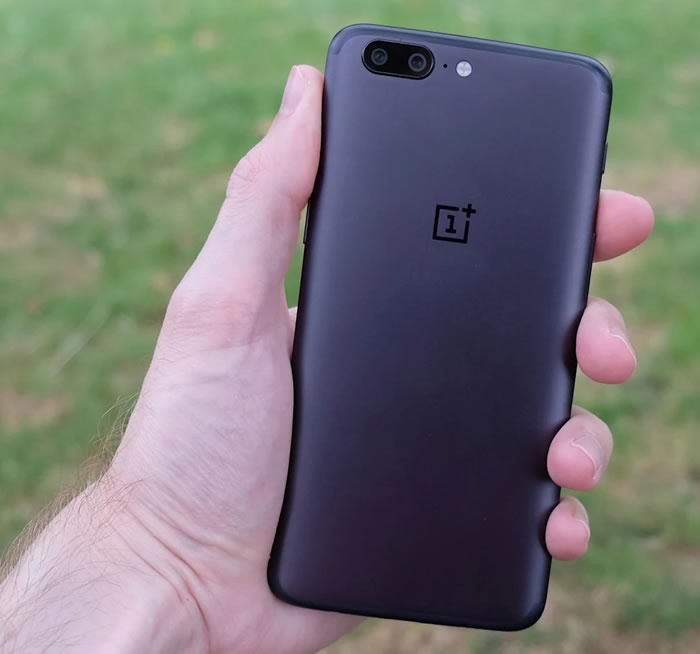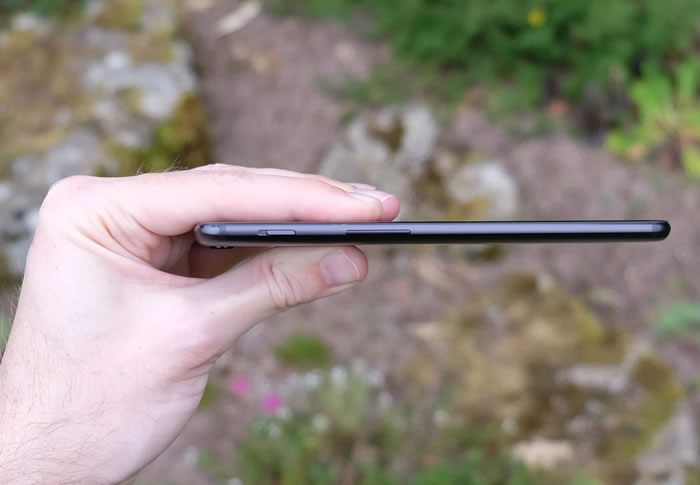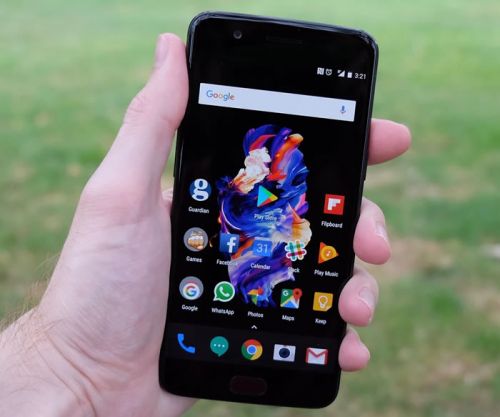Intro
OnePlus has rapidly made a name for itself as a maker of thoughtfully designed, gimmick-free, and above all excellent value smartphones. The OnePlus 5 is the manufacturer’s most expensive phone yet, reflecting its growing ambition.
As the OnePlus 5 edges a little closer to its premium rivals in terms of pricing, it has far less margin for error than last year’s OnePlus 3 (there was no OnePlus 4). You might forgive a £330 phone a few rough edges, but a £450 phone is a different story entirely.
Has this premium gamble paid off?
Screen
Those who are obsessed with smartphone specs will flag up the OnePlus 5’s 5.5-inch 1080p display as one of those rough edges we mentioned in the intro. After all, rivals like the Samsung Galaxy S8 and the HTC U11 sport far more pixel-packed QHD screens.
Such claims are, in a word, bunkum. QHD (or 2560 x 1440) displays take a lot more than they give, sucking battery life and CPU resources with minimal visible improvement. We defy you to spot the individual pixels on the OnePlus 5’s display, unless you bring it really close to your face. And the only feasible reason you’d want to do that is if you were into mobile VR, which remains a niche pursuit.
That’s enough of being defensive about the OnePlus 5’s screen. It is a fine example of an AMOLED display, rich in colour (you can adjust its tone to suit your taste) and plenty bright enough outdoors. Practically speaking, it’s an excellent way to consume videos, photos, and games.
Let’s not forget that Apple uses an identically proportioned display for its top phone, the iPhone 7 Plus - and that’s £270 dearer than the OnePlus 5.
Design

At first glance the OnePlus 5 design might seem quite conservative, and even a little derivative. Hold it in your hand, however, and you can’t help but be impressed.
This is a beautifully made all-metal and glass phone with plenty of subtle details if you look (and feel) closely enough. There’s the curved edges of the matte aluminium back that ensure it sits pleasantly in the hand, the sweeping ‘Horizon Line’ edges, and the unobtrusive antenna lines that arc around the top and bottom of the phone. At just 7.3mm thick, it’s the slimmest phone OnePlus has ever made.
The 64GB/6GB RAM model (which we tested) comes in Slate Gray, while the 128GB/8GB RAM model comes in Midnight Black. They look incredibly similar - perhaps overly so.
It’s also true that the OnePlus 5 isn’t accredited with any form of waterproofing, but it’s hardly unique for that. The Google Pixel, for example, also lacks such a feature. More of a design downer to our mind is the phone’s single bottom-mounted speaker, which is way too easy to cover up when playing games or watching videos.
Overall, it can’t be denied that there’s a considerable iPhone 7 influence at play in the OnePlus 5’s design. While OnePlus has borrowed from the best, though, it has done so with considerable skill and discernment, resulting in a phone that somehow has a subtle look and feel of its own.
Power
The OnePlus 5 is a serious flying machine. It packs the very latest Snapdragon 835 CPU, which is the 2.45 GHz octa-core chip that you’ll find powering the HTC U11 and certain regional models of the Samsung Galaxy S8.
It’s just about as a fast as mobile processors get right now, and that’s backed by at least 6GB of superfast RAM. You can specify 8GB if you really want to max those specs out, but the truth is that even 6GB is overkill. Pretty much every other Android flagship has just 4GB.
Without straying into meaningless benchmark comparisons, the OnePlus 5 handles anything you can throw at it without skipping a beat. From running high-end games like Guns of Boom and Unkilled to juggling between multiple apps (which is where that extra RAM might come into play) and browsing the web, it’s one of the most fluid smartphone runners money can buy.
Camera
OnePlus has really gone to town on its camera tech with the OnePlus 5, resulting in a dual-camera setup that’s not at all dissimilar in principal to what Apple is offering with the iPhone 7 Plus.
You get one 16MP 24mm camera with a bright f/1.7 lens for general shots, and one 20MP 36mm camera with an f/2.6 lens. The result in practice is a proper and seamless 2x zoom effect that lets you get in closer to distant subjects without the level of image degradation you get with digital zoom.
This dual-camera setup is also employed to capture what OnePlus refers to as ‘Portrait Mode’ shots. Get close to your subject with this mode and the OnePlus 5 will use the differing focal lengths to increase the blurry ‘bokeh’ background effect.
At its best this produces the kind of super-accentuated portrait or close-up pictures you only tend to get with high-end DSLRs. Some fine-tuning is needed on OnePlus’s part, however, as you can get a disconcerting blur effect around your subject.
In truth this is a fairly inconsequential feature. What matters is that the OnePlus 5 camera takes quick, accurate, and reliable pictures - particularly in strong lighting. We should note that it’s not the best in the business for general snaps, but it’s more than good enough.
Selfie fans are well catered for too. There’s a 16MP f/2.0 front-facing camera that goes above and beyond the call of duty for such a component, with a screen-based flash and even auto-HDR.
Features

As we’ve just discussed, OnePlus has really upped its camera game with the OnePlus 5 in a bid to lift itself into the elite league of flagship phones. But that’s not the only defining feature on display here.
One uniquely appealing aspect of all OnePlus phones is their custom Oxygen OS. This is one of the more thoughtfully restrained takes on Android, producing a light and fluid UI that’s pleasurable to use and mercifully free of pointless bloatware.
General navigation is classic Android, but you get little customisable touches like a Shelf (accessed by swiping to the left from the main homescreen) filled with useful widgets, and a Reading Mode that dulls the colour and lessens eye-strain like a classic Kindle e-reader.
The OnePlus 5 also comes with a physical alert slider switch immediately above the volume keys, which is a welcome feature you don’t typically see outside of an iPhone. Talking of physical controls, the OnePlus 5’s front-mounted fingerprint sensor is as fast and reliable as they come.
Battery life, memory and connectivity
The OnePlus 5’s 3300mAh battery isn’t especially huge, but it’s above average for a 2017 Android flagship phone. Both the Samsung Galaxy S8 and the HTC U11 have 3000mAh units, for example, as does the OnePlus 3 (though the OnePlus 3T refresh came with a slightly larger 3400mAh battery).
Combined with its efficient 1080p AMOLED display and Snapdragon 835 CPU, the OnePlus 5 is capable of lasting you through a day of heavy usage with relative ease. I routinely found myself getting through from 9:00am to bed time at around 11:30pm with around 50 percent battery life remaining. This is with what I’d call moderate usage, generally including a number of message exchanges across WhatsApp, Slack and Hangouts, a couple of calls, half an hour or so of gaming, half a dozen or so camera shots, and the occasional news check through the Guardian and Flipboard apps.
That’s a pretty decent result, all things told, though naturally heavy users will be glad to get to a wall socket come the end of the evening. We should also note that we used autobrightness for much of our time with the phone, though we would often crank it up manually in very dark conditions when the screen brightness seemed to dip a little too low.
Even when you find that your OnePlus 5 is running a little low on juice, though, the charging process is one of the fastest around. Using OnePlus’s own Dash Charge technology, we were able to regain just shy of 50 percent of a full charge in 30 minutes.
Verdict
The OnePlus 5 ticks all of the boxes we require of a high-end smartphone. It’s well built, extremely fast, and has a vibrant display. It benefits from intuitive yet customisable software, while OnePlus has equipped it with a strong dual-camera system that’s more than just a gimmick. Add to that exemplary battery life, fast charging, and an excellent fingerprint sensor.
While the OnePlus 5 may not be the absolute best in any of these areas, it would be a gross disservice to call it a ‘jack of all trades, master of none’. Where the OnePlus 5 truly excels is in doing everything to a very high standard while costing hundreds of pounds less than its flagship rivals.
Dimensions (mm): 154.2 x 74.1 x 7.3
Weight (g): 153
Battery capacity (mAh): 3300
Colours: Slate Gray, Midnight Black
Screen size (inches): 5.5
Resolution: 1080 x 1920
Pixels per inch (PPI): 401
Processor: Octa-core 2.45GHz
Processor make: Qualcomm MSM8998 Snapdragon 835
RAM: 6GB/8GB
Internal storage: 64GB/128GB
Expandable storage up to (GB): None
Camera: 16MP and 20MP (16MP front)
Operating System: Android 7.1.1 Nougat







